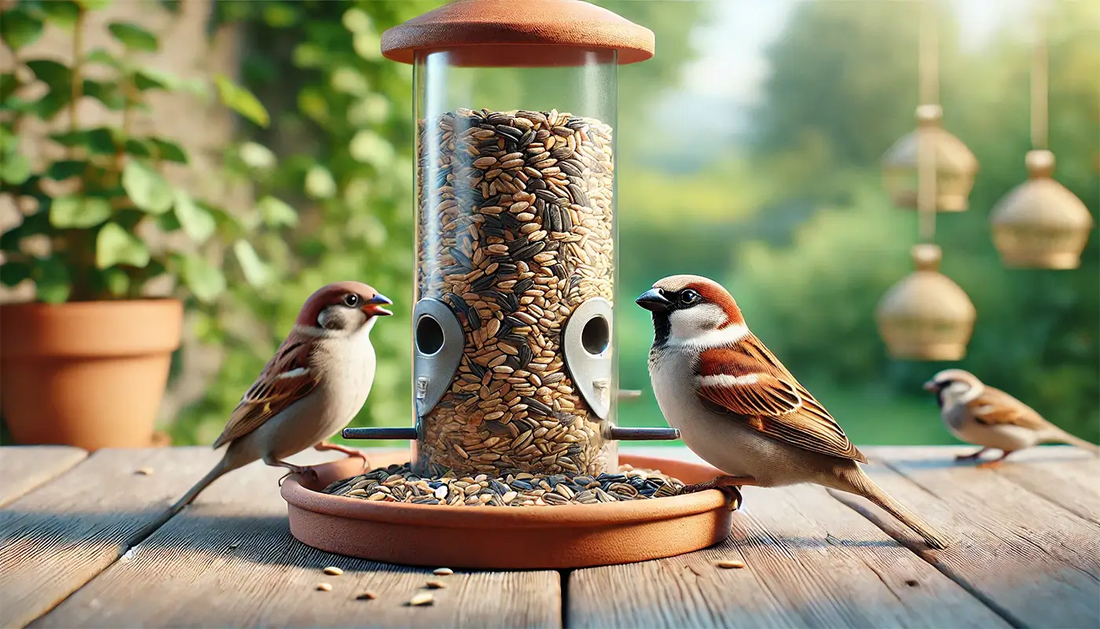
Bird seed to superfood: The history of millets
Millets have been around for thousands of years. Once considered mere bird feed, they have now risen to the status of a superfood. People across the globe are beginning to understand their nutritional benefits. From ancient civilizations to modern health enthusiasts, millets have come a long way. Let us explore the fascinating history of millets, from bird seed to superfood.
History of millets: Ancient beginnings
Millets are among the oldest grains known to humanity. People have been cultivating them for over 7,000 years. Ancient civilizations, like those in Africa and Asia, relied heavily on millets as a staple food. They were easy to grow, resilient to harsh weather, and required minimal water. This made them ideal for the semi-arid regions of the world.
In India, millets were known as "poor man’s food." They were an essential part of daily diets, especially for those in rural areas. Farmers cherished millets for their hardiness. Unlike other grains, millets could thrive even in poor soil. This resilience made them a reliable food source for ancient communities.
History of millets: Forgotten in the modern era
With the advent of industrial agriculture, millets began to lose their importance. The Green Revolution brought about the large-scale cultivation of rice and wheat. These crops offered higher yields and were more commercially viable. As a result, millets were pushed to the margins. They were no longer seen as a "trendy" food but rather as feed for livestock or birds.
Rice and wheat took center stage, especially in countries like India and China. Government policies also promoted these high-yield crops. The focus shifted towards mass production and feeding large populations. Slowly, millets became a forgotten grain. They were grown and consumed only in select rural areas, often viewed as inferior to other cereals.
The rediscovery of millets: A superfood with ancient roots
The tide began to turn in recent decades. With rising health concerns and a growing awareness of nutrition, people started re-evaluating their diets. Many realized that the modern diet lacked diversity and essential nutrients. This renewed interest led people back to millets, which are packed with vitamins, minerals, and antioxidants.
Health experts started to promote millets as a superfood. They praised their high fiber content, which helps in digestion. Millets are also gluten-free, making them an excellent choice for those with gluten intolerance. People also appreciated their low glycemic index, which helps in managing blood sugar levels. In a world facing a diabetes epidemic, this aspect of millets made them even more attractive.
Nutritional benefits of millets
Millets are rich in nutrients. They contain high levels of protein, fiber, and essential vitamins. Millets are also a good source of iron, calcium, and magnesium. These nutrients help boost immunity, strengthen bones, and improve heart health.
Unlike polished grains like white rice, millets retain their natural bran. This makes them a whole grain, which is beneficial for overall health. Eating whole grains reduces the risk of heart disease, aids in weight management, and supports digestive health. Millets, with their nutritional richness, fit perfectly into this category.
Millets also have antioxidants that help fight free radicals. These free radicals can damage cells and lead to chronic diseases. By consuming millets, one can reduce oxidative stress and improve overall well-being. This has made millets a popular choice among those seeking to adopt a healthier lifestyle.
Environmental advantages
Millets are not just good for health; they are also good for the environment. Unlike water-intensive crops like rice, millets need very little water. They can grow in arid and semi-arid regions, making them an environmentally friendly choice. With climate change becoming a pressing concern, millets offer a sustainable alternative.
Additionally, millets do not require chemical fertilizers or pesticides. They grow well in poor soil without much intervention. This makes them ideal for organic farming. In a world increasingly worried about pesticide residues, millets provide a safe and natural option.
Modern-day superfood
Today, millets are enjoying a renaissance. Health-conscious individuals are embracing them in various forms. Millets are now available as flour, flakes, and even in ready-to-eat products. Restaurants are also including millet dishes on their menus, offering healthy alternatives to traditional dishes.
Many chefs are experimenting with millets to create innovative recipes. Millet pancakes, millet porridge, and millet-based salads are becoming popular. Food bloggers and nutritionists are also playing a key role in promoting millets. They share recipes and information, making it easier for people to include millets in their diet.
Government and global support
Governments are also recognizing the importance of millets. In 2023, the United Nations declared it the "International Year of Millets." This move aimed to promote the cultivation and consumption of millets worldwide. India, one of the largest producers of millets, took the lead in these efforts. The government started initiatives to support millet farmers and increase awareness among consumers.
Such efforts have paid off. More people are now including millets in their daily meals. The demand for millets has risen, benefiting farmers and encouraging sustainable agriculture. With increasing awareness, millets have shed their image as mere bird seed and emerged as a superfood for the modern age. History of millets, from bird seed to superfood.
How to include millets in your diet
Incorporating millets into your diet is easy. You can replace rice with millet in dishes like pulao or khichdi. Millets can also be used to make rotis, dosas, and porridges. For breakfast, try millet flakes with some fresh fruit and yogurt. The versatility of millets makes them an easy addition to various recipes.
If you are new to millets, start small. Gradually replace some of your usual grains with millets. Experiment with different types of millets, like foxtail, pearl, or finger millet. Each type has a unique flavor and texture, offering endless possibilities for cooking.
Conclusion: History of millets, from bird feed to superfood sensation
The journey of millets from bird seed to superfood is fascinating. Once neglected, these ancient grains are making a strong comeback. Their nutritional benefits, combined with environmental advantages, make them an ideal choice for a sustainable diet. As more people embrace millets, they are reclaiming their rightful place on our plates. Whether for health reasons or environmental concerns, millets are a grain worth adding to your diet. Start today and experience the benefits of this incredible superfood.
Image Courtesy: ACCENTERRA
Did you find this blog post helpful? Got ideas or questions? Join the conversation below! Your insights could help others too, so don’t hesitate to share!
Please note that all comments will be moderated before being published.
